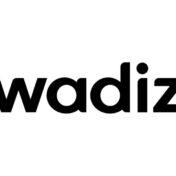Business is a zero-sum game. Collaboration is a plus-sum game.
Everyone seems to be talking about "The Sharing Economy" - everybody literally gets a share of your meal, and vice versa. Take the Korean startup, Zipbob. So: Forget zero-sum games; people are all about "collaborative consumption" now. And the people in Asia, especially Korea, are rising up.
Wait. Collaborative consumption?
Short answer: commercial arrangements and transactions in which participants share and access to products and services, as opposed to having individual ownership. Often this model is enabled by technology and peer communities.
Examples? eBay, Craigslist, Zopa (social lending), Airbnb (peer-to-peer accommodation services), LocalGuiding (peer-to-peer travel experiences), TaskRabbit (peer-to-peer task assignments), Zipcar (car sharing), RidePal (commute-bus sharing)... Need I say more?
The situation in Korea
According to IndexMundi, Korean GDP real growth rate has been declining from 6.3% in 2010 to 3.6% in 2011, and in 2012, there was a 2.7% growth. Meanwhile, there is a growth in the unemployment sector - in 2012, there was an unemployment rate of 3.8%, up from 3.4% in 2011. Now, with the incoming Park administration in 2013 following the December 2012 presidential election, Korea is likely to face the challenges of balancing heavy reliance on exports with developing domestic-oriented sectors, such as services. Add student loans and debts.
We've been seeing these trends for quite some time now, and these are not only unsustainable, but they are devastating to an individual. Market conditions drive innovation as much as great entrepreneurs do. Necessity is indeed the mother of all invention.
So those underemployed (yet incredibly, incredibly talented) people who are looking for employment will need more part-time jobs, and will gladly take on that offer to share rooms. On other words, "if your closet is full of clothes and your credit card is full of debt - of course you're going to trade clothes with other people rather than only buying new stuff".
What are the types of collaborative consumption companies?
Here are four types of collaborative consumption companies - these will give some guidance as a framework.
1. Empowering the un(der)employed - Market meet reality. Increased numbers of unemployed youth means they're always going to make extra money 'as a side thing'. There are companies like Kmong that lets you 'buy talent for KRW 5,000 (approximately USD 5)'. People trade their skills - such as drawing a caricature - for 5,000 won. Also, it will be interesting to see a startup that empowers unemployed seniors in Korea.
2. Communities of ____? Tapping into global markets - Ship talent to a global market. There are many talented people in Korea - open them up ot the global demand with global taste. An example of this is DeviantART, a community of artists, where people can produce a piece of artwork to make a living.
3. Making existing markets more efficient - Taxi and limo services that already exist are excellent places to start. There have been markets like these that always existed (but are not so efficient).
4. Breaking down markets requiring physical barriers - Why not lower the margin while providing more service to the masses that do not need you to be 'physically present' - this will be the trend for counsellors, online tutors, financial planners and so on.
Will this trend last?
We know that the economy is suffering - but the key drivers in Asia, such as un(der)employment, personal and government debt, resource scarcity, shifting demographics, and globalisation will mean that there will always be ones who adapt and thrive, and there is a strong need for people to network and help existing players kickstart their startups. Because let's face it - most Asian startups cannot compete with the scale and costs of overseas startups.
But is that still the case? American innovation in recent decades has been remarkably narrowly based, according to Peter Thiel, the Silicon Valley venture capitalist. Also, U.S. consumer confidence is decreasing to 78 and there are all sorts of cover stories about American innovation nearing its end.
Consumer confidence is an indicator designed to measure the degree of optimism that consumers feel about the overall state of the economy and their personal financial situation. How confident people are about stability of their incomes determines their spending activity and therefore serves as one of the key indicators for the overall shape of the economy.
If consumer confidence is higher, consumers are making more purchases, boosting the economic expansion. On the other hand, if confidence is lower, consumers tend to save more than they spend, prompting the contraction of the economy.
Here are some good news for Korea:
1. Innovation, government support, and consumer confidence. In South Korea, we see consumer confidence at a level of 104 and trending upward in South Korea. There is also an increase in venture capital funds and government support.
2. Regional leverage. Korean startups do have a local physical location in the Asian neighbourhood. And that enables networking and collaborating, leading to greater chances of partnerships and thus gaining regional leverage.








